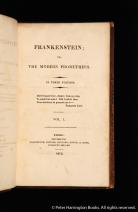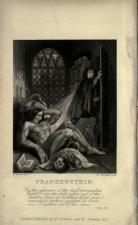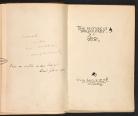The Picture of Dorian Gray and Frankenstein as Gothic Novels
Created by Mickayla Whitt on Thu, 12/09/2021 - 12:43
My paper focuses on Oscar Wilde's The Picture of Dorian Gray as a Gothic novel, and the novel's relation to Mary Shelley's Frankenstein, another Gothic novel.
Timeline
Chronological table
| Date | Event | Created by | Associated Places | |
|---|---|---|---|---|
| 1 Jan 1818 |
Publication of the First Edition of FrankensteinThe first edition of Mary Shelley’s Frankenstein; or The Modern Prometheus was published on January 1st, 1818. The publishing house that printed it, Lackington, Hughes, Harding, Mavor, & Jones produced only five hundred copies and was published anonymously. Shelly had come up with the idea for the novel following a stay in Geneva, Switzerland, a trip where she became acquainted with Lord Byron. This trip is also responsible for the work The Vampyre by John William Polidori. The subtitle, "The Modern Prometheus" has been dropped in modern editions. |
Mickayla Whitt | ||
| 31 Oct 1831 |
Publication of the Popularized FrankensteinOn October 31st, 1831 the most popularized edition of Frankenstein is published following the success of a play entitled Presumption; or, the Fate of Frankenstein by Richard Brinsley Peake. The play was based on Shelley’s novel and gained a huge following. The success of this caused William Godwin, Shelley’s father to have the novel published again, with him making some edits. This version was published by Henry Colburn and Richard Bentley. Changes were made from the 1818 text to get rid of some of the vulgar and radical parts of the novel. Two popular ideas of Frankenstein, the saying "it lives!" and Igor, Victor's assistant were created by Peake in the play but not added by Shelley in later editions. |
Mickayla Whitt | ||
| 1891 |
Publication of the Full Edition of The Picture of Dorian GrayIn 1981 the second and longer, version of Oscar Wilde’s The Picture of Dorian Gray is published by Ward, Lock, and Company. This follows the 1890 novella version of the novel published in Lippincott’s Monthly Magazine. This issue expanded the novel from thirteen to twenty chapters. Wilde made edits both on his own account as well as keeping changes made by editors. Wilde added chapters three, five, and fifteen through eighteen, as well as changing the original chapter thirteen into split chapters nineteen and twenty. Some accusations that Wilde made the edits in retaliation to criticism were denied by Wilde during his trial. |
Mickayla Whitt |



